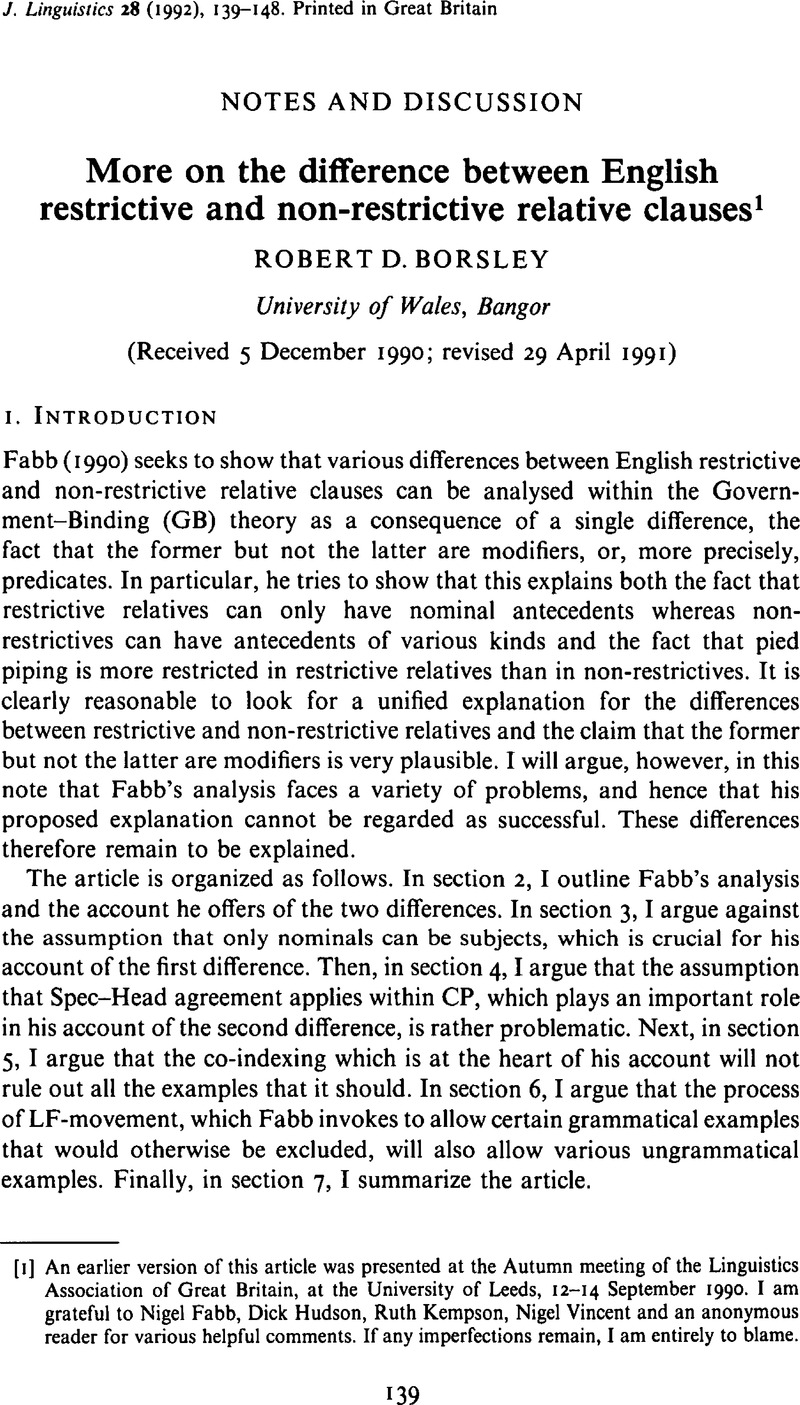Crossref Citations
This article has been cited by the following publications. This list is generated based on data provided by Crossref.
Tao, Hongyin
and
McCarthy, Michael J
2001.
Understanding non-restrictive which-clauses in spoken English, which is not an easy thing.
Language Sciences,
Vol. 23,
Issue. 6,
p.
651.
Vries, Mark de
2006.
The Syntax of Appositive Relativization: On Specifying Coordination, False Free Relatives, and Promotion.
Linguistic Inquiry,
Vol. 37,
Issue. 2,
p.
229.
Heck, Fabian
2009.
On Certain Properties of Pied-Piping.
Linguistic Inquiry,
Vol. 40,
Issue. 1,
p.
75.
Abdoulaye, Mahamane L.
2011.
Relative clauses in Hausa: A grammaticalization perspective.
Journal of African Languages and Linguistics,
Vol. 32,
Issue. 1,
p.
1.
Jong-Bok Kim
2011.
English Transparent Free Relatives: Interactions between the Lexicon and Constructions.
English Language and Linguistics,
Vol. 17,
Issue. 2,
p.
153.
Lee Jaekeun
and
Sungshim Hong
2015.
Remarks on English Non-Restrictive Relative Clauses.
Korean Journal of English Language and Linguistics,
Vol. 15,
Issue. 4,
p.
639.
Sungshim Hong
and
Lee Jaekeun
2016.
On the Nature of Wh-word in English Non-Restrictive Relative Clauses.
Korean Journal of English Language and Linguistics,
Vol. 16,
Issue. 3,
p.
621.
Lelandais, Manon
and
Ferré, Gaëlle
2017.
How Are Three Syntactic Types of Subordinate Clauses Different in Terms of Informational Weight?.
Anglophonia,
Vol. 23,
Issue. ,
Lelandais, Manon
2020.
Modelling the interpretative impact of subordinate constructions in spontaneous conversation.
Corela,
Radford, Andrew
2020.
An Introduction to English Sentence Structure.



